One of the reasons for the popularity of heat pumps is that they are remarkably safer than combustion-based conventional boilers and furnaces. While some safety issues are still associated with both ground and air source heat pumps, the technologies of these pumps are rapidly getting more sophisticated.
Ground source heat pumps and air source heat pumps are both relatively safe, assuming good design and proper installation. They emit no toxic waste and do not heat water to near-boiling temperatures. Regular maintenance reduces theoretical risks of leakage, electrical failure, and mold build-up.
In this post, we are going to discuss everything you need to know about the safety of ground source and air source heat pumps. Hopefully, here you will find answers to all your questions regarding heat pumps. Read on!
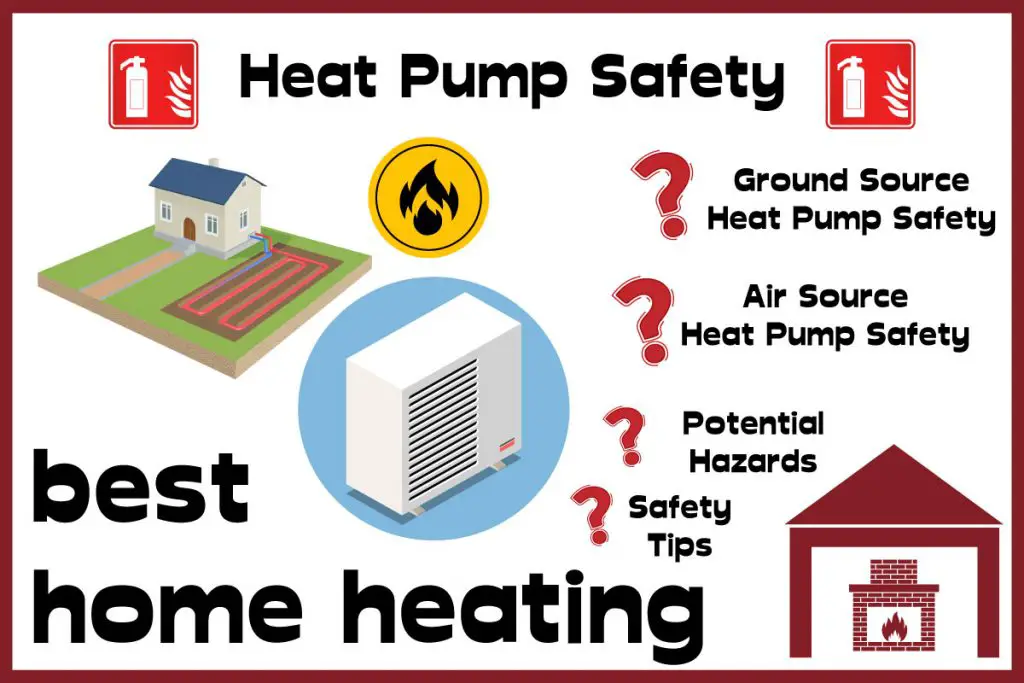
Safety of Ground Source Heat Pumps
While conventional boilers, like other modern heating systems, are reasonably safe, ground source heat pumps are even safer. That’s mainly because heat pumps do not burn fossil fuel to generate heat. Before we go into other features that make ground source heat pumps safer than boilers, let’s see how these heat pumps work.
How does a ground source heat pump work?
The ground absorbs solar energy by means of direct sunlight. As a result, the ground naturally maintains a year-round temperature of around 8-12°C. A ground source heat pump basically works by extracting low-temperature solar energy and raising it to a higher temperature.
A cold water antifreeze mix is pumped through the ground within a series of ground arrays. The antifreeze mix circulating around the arrays absorbs heat from the ground. The warm antifreeze mixture then travels via a heat exchanger, which is also called an evaporator.
The evaporator has a secondary sealed side that contains a refrigerant that acts as a heat transfer fluid. As the water antifreeze mixture goes into the evaporator, the refrigerant absorbs heat from the mixture, begins to boil, and turns gaseous. The gas then travels via a compressor, which raises its temperature.
The hot gas then enters a condenser, which is the second heat exchanger of the system. The heat is then distributed via heat emitters such as radiators or an underfloor heating system.

Fewer safety concerns
A ground source heat pump is safe mostly because it’s not a combustion-based system. There are fewer safety concerns because the system relies on electricity, not fossil fuels. There are no combustion gasses, no toxic fumes or carbon monoxide poisoning, and no risk of explosion.
Ground Source Heat pumps may contain mold
Some parts of the heat pump are exposed to moisture, and mold loves moisture. Not all heat pumps contain mold, though. In most cases, you can prevent mold growth by getting your heat pump professionally cleaned at least once a year.
A great option for people with asthma or other respiratory issues,
Geothermal heat pumps can significantly reduce CO2 emissions and cut overall air pollution. The pumps are designed to provide fresh air. They are electrically driven and therefore have no point-of-use emissions. For people with respiratory issues, a heat pump is a far better option than a conventional boiler or furnace.
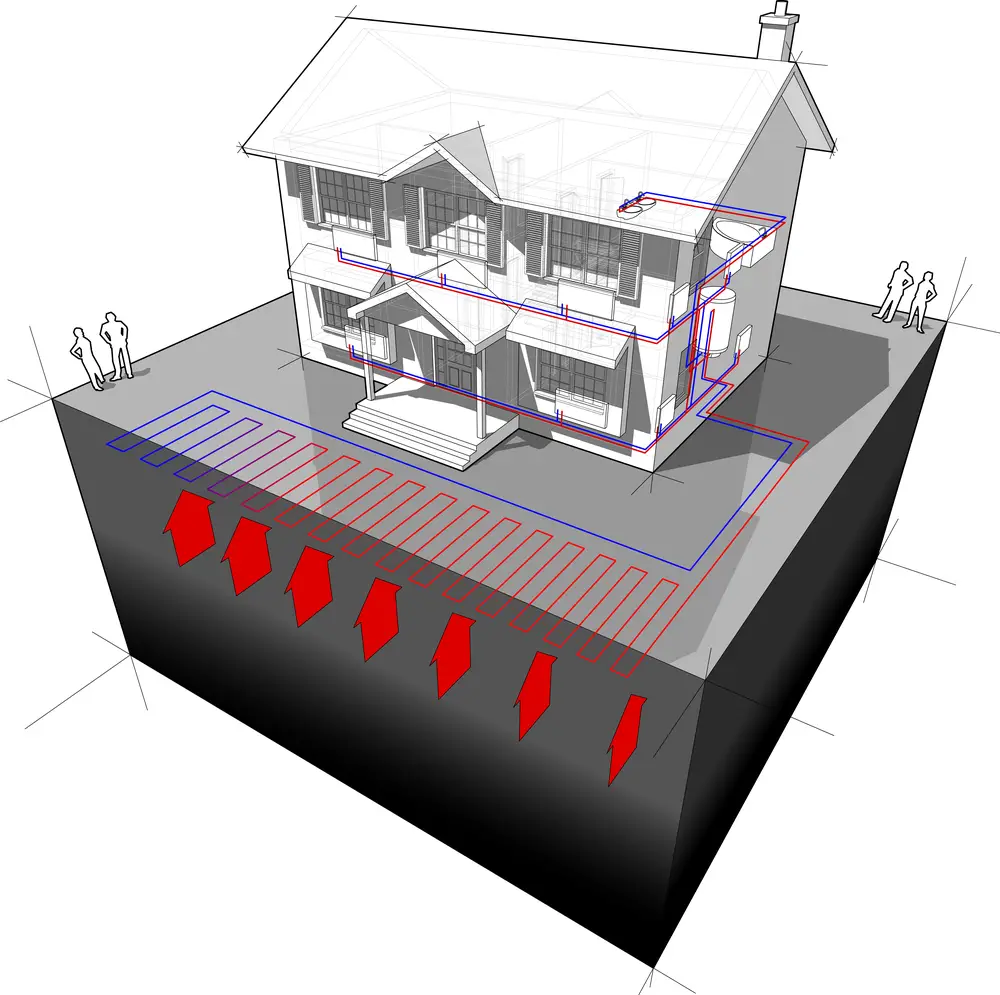
No risk of scalding
Geothermal is the safest form of heat for homes and offices. There is no fuel storage, no flame, and no risk of burns. The pump has no ventilation or chimney. Ground source heat pumps are almost exclusively paired with underfloor heating, which operates at a temperature of 16-27°. That means, there is no chance of burn, even if there is a leak.
Leaks can happen
The water or antifreeze mix can leak from the underground pipes. If that happens, you may notice frost or ice forming on the unit’s above-ground part. The inside of your home will also become less comfortable. There may be wet spots in the yard. To repair the leak, a professional first determines the exact point of the leak and then adds a special dye to the pipe.
The refrigerant liquid is environmentally safe
The fluid circulating throughout the copper ground loop and inside the geothermal unit is R-410A, which is safe for the environment. It’s an inert gas that poses no threat to humans. This refrigerant is non-flammable and non-toxic, according to the United States Environmental Protection Agency. Even if the environment leaks into the ground, it’s not bad for the environment.
Pressure Issues
A ground source heat pump, like other systems that depend on pressure, can lose its pressure charge. And if that happens, the pump fails to maintain its desired temperature levels. Pressure problems can occur due to too little water traveling via the heat exchanger. A dirty water filter can be responsible for high pressure. If the pressure is not within the manufacturer’s recommended range, consider calling an HVAC expert.
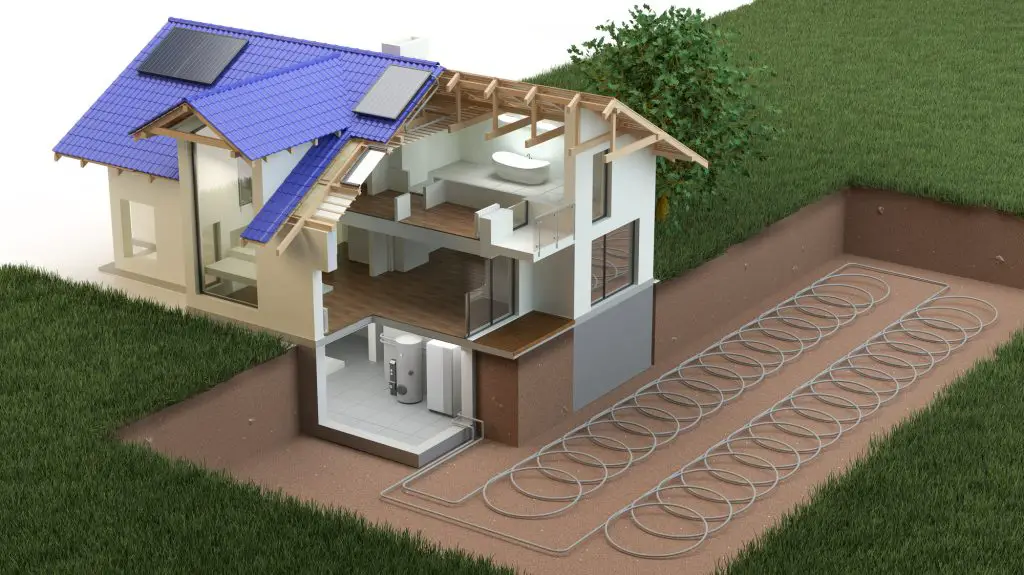
No risk of fire
As we have already stated, a GSHP doesn’t use combustion. No flammable substance is required for the operation of the pump. The system basically absorbs heat from the ground and transfers that heat to your home, and therefore, there’s no risk of fire.
Electrical safety
While a geothermal heat pump uses electricity to intensify naturally occurring underground heat, the unit does not pose any risk for electrical hazards. The pump comes with sophisticated safety features.
Potential landscape alterations
Above-ground alterations may be required for installing a ground loop system. A horizontal loop setup will require digging trenches, and that may affect your property’s physical appearance. A wide surface area is not required for vertical ground loops, but your property must have enough space for accommodating heavy machinery used for drilling vertical loops.

Safety of Air Source Heat Pumps
Just like ground source heat pumps, air-source heat pumps are remarkably safer than conventional boilers or furnaces. With that said, ASHPs have their drawbacks. Before we dive deep into the safety concerns associated with air source heat pumps, let’s see how the system works.
How does an air source heat pump work?
An air-source heat pump works pretty much the same way as a refrigerator works—just in reverse. The system basically extracts heat from the outside air. The exact mechanism depends on the type of air-source heat pump you have. There are two different types: air to water and air to air.
An air-to-water heat pump extracts heat from the outside air and transfers that heat to a coolant. The coolant then travels via a heat exchanger and reaches a hot water reserve tank. The hot water is then circulated to your home’s faucets, showers, radiators, or/and underfloor heating. An Air-to-Water heat pump is capable of meeting your hot water needs up to 60°C. 60 degrees is still hot enough to cause burns though, so care should be taken whenever dealing with the hot water pipes and tap.
At the same time, the system can heat your space.
On the other hand, an Air-to-Air heat pump is used for space heating only. It extracts heat from the outside air and transfers the heat to a coolant. The coolant then travels via a compressor, and this process raises the temperature of the coolant. As a result, it turns gaseous.
The vapor is then transported to the pump’s indoor unit. In the cold months, hot air is blown out indoors. In the warmer months, the system extracts warm air from inside and then releases the air outside, making your home slightly cooler.
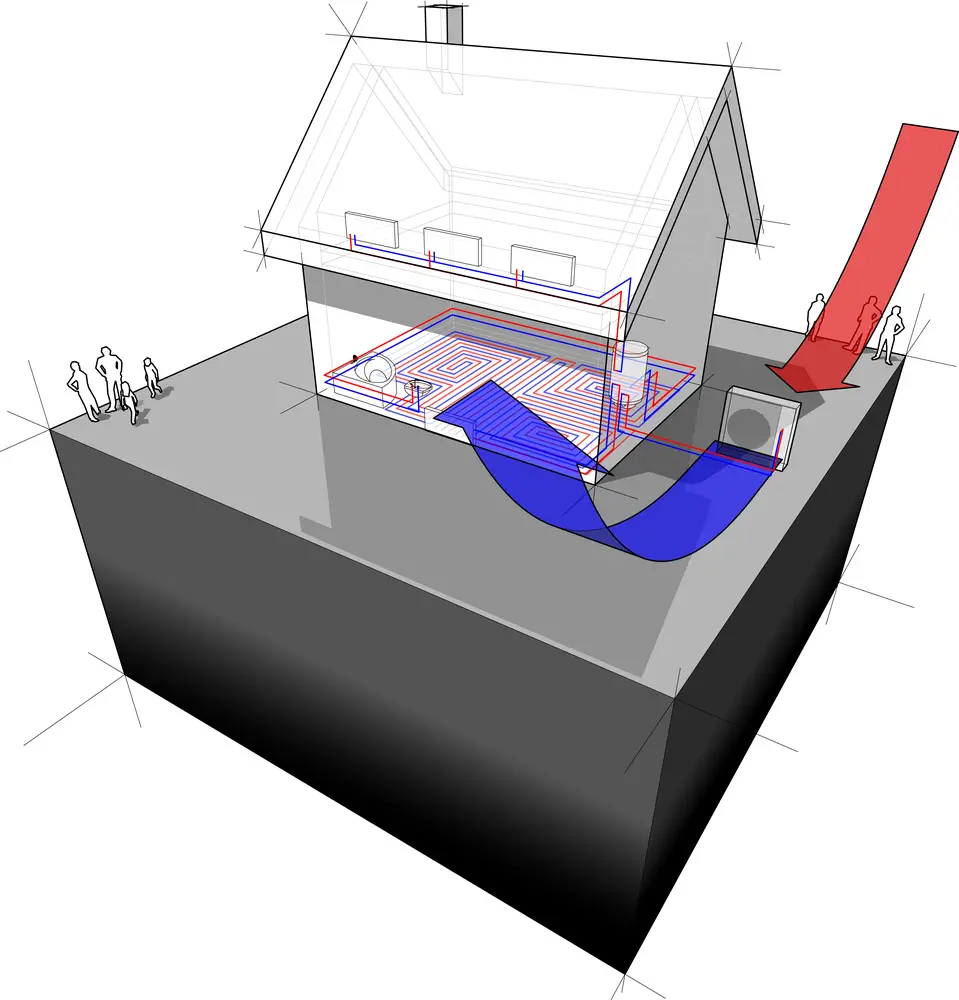
Electric drive technology
ASHPs come with guaranteed safety, in part because they use electric drive technology, which involves applying electric drive compressors for heat conversion. The system does not directly use electricity for heating. Due to the separation between electricity and compressor, there is very little, if any, the risk of leakage.
Low-carbon, no toxic gasses
Unlike a fuel-burning furnace or boiler, an air source heat pump has no point-of-use emissions. An air-source heat pump does not emit dust, soot, or toxic gasses into the atmosphere. That’s one of the reasons so many environmentally conscious people are showing interest in these heat pumps.
Noise
An ASHP has a large fan and a compressor, and they make a little bit of noise when running. However, this issue can be resolved by following strict planning standards. To meet the standard development status, you just have to make sure that the sound level is within 42dBA at your neighbor’s window or any other nearest assessment point.
A high-quality air source heat pump makes very little noise, but it’s still audible, and in some cases, it can be a nuisance. If you would like to choose a completely noise-free solution, consider getting a ground source heat pump installed.
Mold
Mold growth is another commonly occurring problem with air source heat pumps. The pump has an outdoor unit that’s often exposed to moisture. If your pump has mold, the residents of your house may experience mold contamination symptoms, such as throat irritation, stuffiness, nasal congestion, and red eyes. To get rid of mold, you have to get the pump cleaned by a professional HVAC technician.
Possible fire hazards
The refrigerants used in air source heat pumps may be combustible, although the units used for home heating contain very little of the stuff.
If released, the quantities used in commercial systems can pose fire hazards. The insulation used for piping systems is also combustible. There is a risk of fire hazards if the ASHP is installed in a room that has an ignition source.
With that said, this risk can be significantly minimized or even eliminated by following some safety measures when installing the pump. The pump should not be installed in an enclosed space or small room. The adjacent electrical equipment should be installed as per the recognized standards.
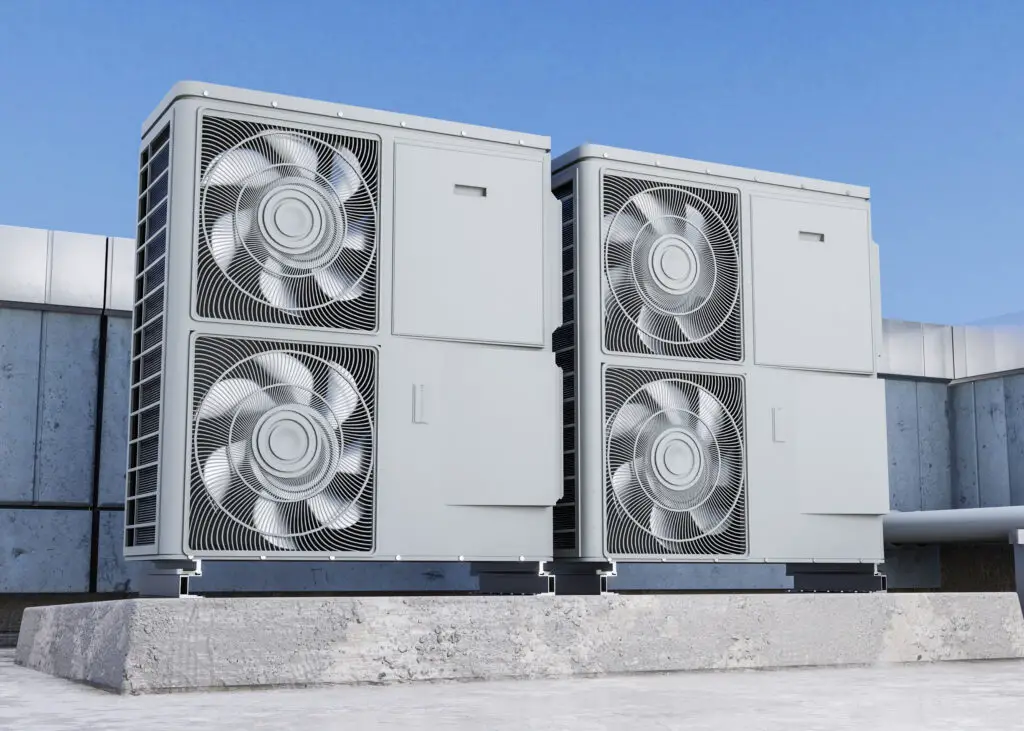
Water leakage
The water distribution networks can leak. This risk is even higher at connection points. Tubes and pipes are sometimes installed in spaces that are not easily or regularly accessed by building personnel, and that is the main reason for water leakage. This problem can be prevented or addressed early by ensuring regular maintenance of the system.
Damage from natural hazards
If your ASHP is installed outdoors, the unit may be susceptible to damage from hail, wind, flood, and lightning. If you are living in an area where your air source heat pump can be exposed to natural perils, take measures to protect the equipment. You may consider installing coil guards or setting up an enclosure or roof.
Pressure issues
A dirty air duct or lack of refrigerant can lead to low pressure. The issue can also be caused by the leaking of the refrigerant. Another possible issue is too high pressure, which can adversely affect the motor and other vital parts. To resolve these issues, certain parts of the heat pump may need to be replaced.
Cessation of function in freezing temperatures
While an air source heat pump can operate at temperatures as low as -20°C, the pump starts losing its efficiency as temperatures drop below 0°C. The efficiency of an air source heat pump directly depends on the temperatures of the outside air. This is not the case with a ground source heat pump, which extracts heat from the ground.
If your ASHP is installed outside, the unit may become frozen in extremely cold temperatures, and produce no heat. While this issue is pretty unlikely, it can happen. Extremely cold temperatures can freeze the pump’s air blower and evaporator.
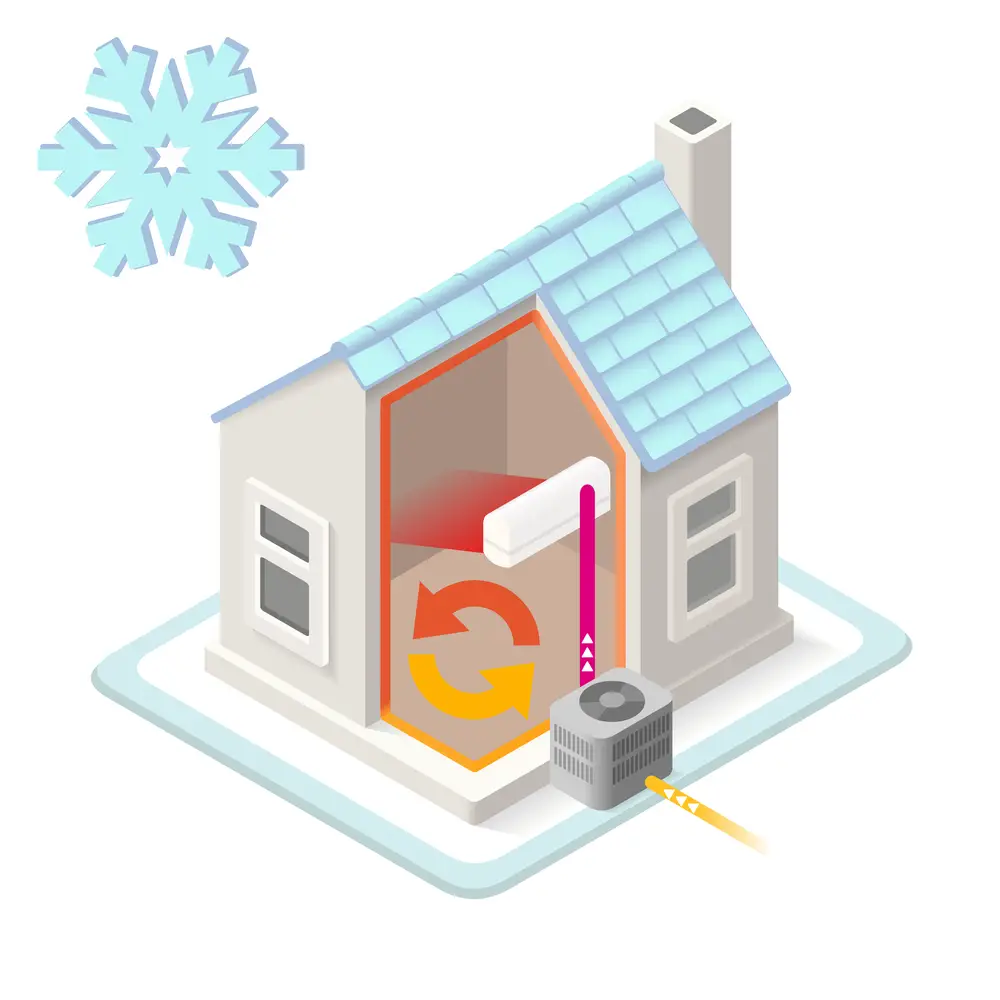
Safety Concerns: Heat Pumps vs. Conventional Boilers/Furnaces
Heat pumps are remarkably safer than combustion-based heating systems such as boilers and furnaces. If you are willing to reduce your carbon footprint, replacing or supplementing your boiler with a heat pump is one of the best things you can do.
Heat pumps have an edge over conventional boilers in terms of efficiency, running costs, and environmental impact. The rising popularity of heat pumps is a clear indication that they will replace combustion-based systems in the foreseeable future.
Conclusion
Both ground source and air source heat pumps are remarkably safer than conventional heating systems such as boilers and furnaces. Nevertheless, some safety concerns should be taken into consideration before and during the installation of a heat pump. The tendency of a heat pump to become unsafe is dependent on how well the system was installed and maintained.
The key is to get educated about the safety of heat pumps before you go ahead with the installation. Before you invest in a heat pump, make sure you have a clear understanding of the pump’s safety features. An experienced HVAC contractor can walk you through the whole process.
Check out all our other information on ground source heat pumps here:
- What Temperature do Ground Source Heat Pumps Produce?
- Do Ground Source Heat Pumps work in Winter?
- Are Ground Source Heat Pumps good for the environment?
- Can Ground Source Heat Pumps work with Radiators?
- Can you combine Ground Source Heat Pumps with Underfloor Heating?
- How much land do you need for a Ground Source Heat Pump?
- Can Heat Pumps Cool?
- How long do heat pumps last? Ground Source Heat Pump Lifespans
- Are ground source heat pumps safe?
Check out all our other information on air source heat pumps here:
- What temperatures do air source heat pumps produce?
- Will air source heat pumps work in an old house?
- Air Source Heat Pump Pros and Cons
- Should air source heat pumps ever be turned off?
- Can air source heat pumps be combined with radiators?
- How efficient are air source heat pumps? Costs and Efficiency explained
- Can you combine air source heat pumps with underfloor heating?
- How long do heat pumps last? Air Source Heat Pump Lifespans
- Are air source heat pumps safe?
- Are air source heat pumps environmentally friendly?
